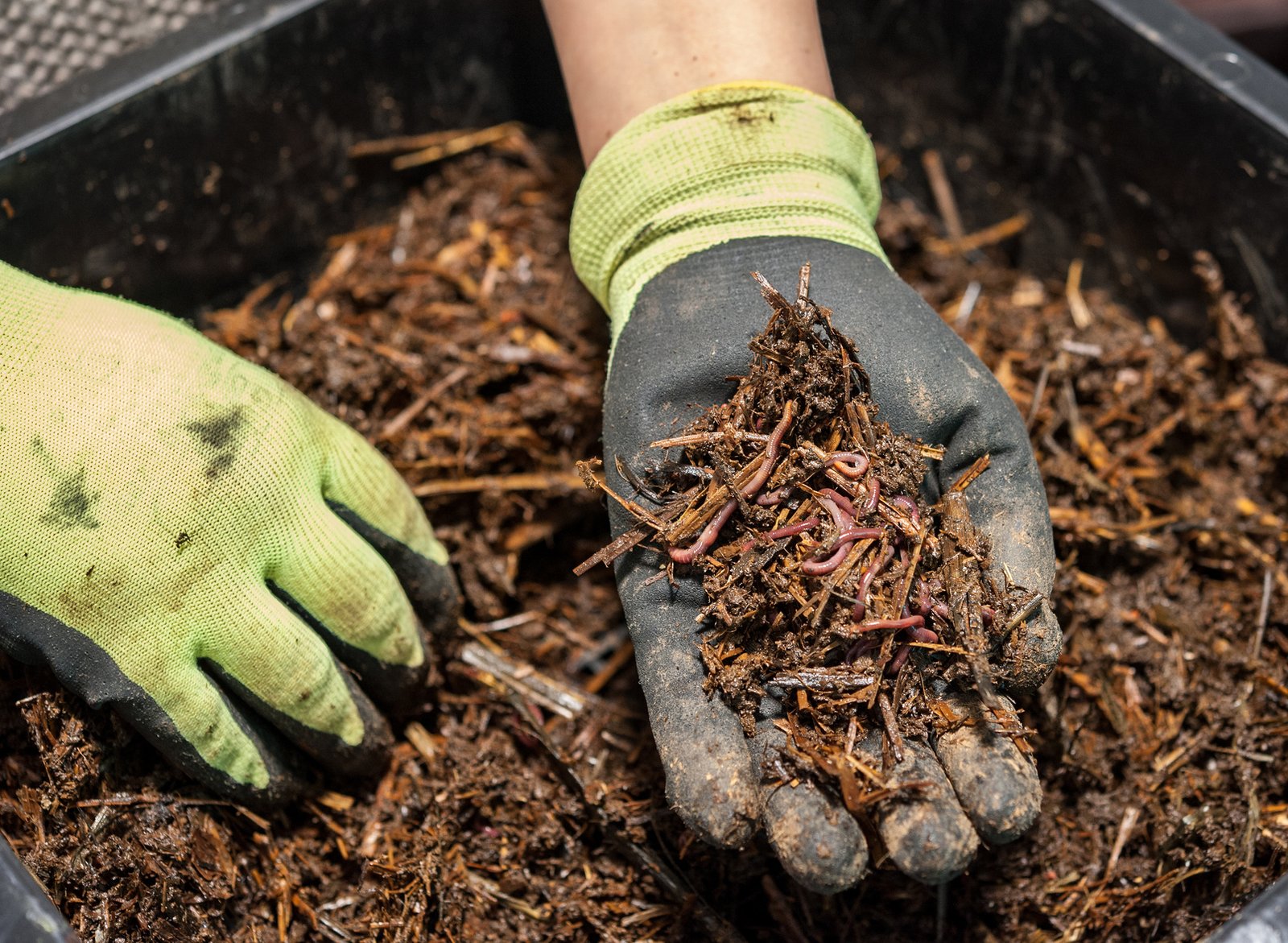Making your own wormery

Wormeries are easy to set up, maintain and are efficient allies when composting kitchen waste. They will increase your compost production and provide a very rich material to feed your plants. Setting up a wormery is a way to increase your gardening production at home and reducing your demand for industrialized and bought groceries. It is a pleasant way to be in contact with nature and help the planet by turning your consumption towards home produced food rather than to products that come from faraway farms and result in greenhouse gas emissions from transportation.

The first thing you need to know about wormeries is that you cannot use any worm you find in the soil, those are earthworms (Lumbricus Terrestris) and do not feed from decaying material, so they are not suitable for composting. Composting worms are known as tiger, red, manure or brandling worms (Eisenia Foetida, Eudrilus Eugeniae, Eisenia Hortsenis). You will need to buy your first 300-500 worms to start or get it from a friend that already has a wormery. The amount of worms needed will depend on the size of the container; it is usually recommended to have 1,000 worms for every 1m² of base surface. They reproduce very quickly, so whoever donates worms to you will not have any significant depletion when giving away some worms. Worms can double their population number in only two or three months.
There are many options of wormeries for sale in shops but you can easily make your own using a plastic or wooden box. Worms like moisture, air and darkness, so it is important to either make holes on the bottom and sides of your plastic container or leave spaces between timber pieces on wooden ones. You shouldn’t use a tall container but using one with a good surface area (around 30 cm diameter) is important as these worms will not go deep in the material and you will be able to add a larger quantity of compostable material in this case. It is important to have a lid so the space stays dark. As your wormery should have holes at the bottom, you can then put a piece of cardboard or some newspaper to prevent your worms from falling. Adding a thin layer of soil at the bottom is also a good idea to make a base and then you can just put your worms and feed them with the compostable material.

In the beginning, you should feed your worms with a small quantity of compostable material to prevent the excess from putrefying. Worms usually eat half their weight of kitchen waste a day and you can use this information to calculate if you are giving them too much or not. The worms usually are agitated and come to the surface when hungry. Some good material to feed them: fruit and vegetable peelings, coffee grounds, used tea bags, crushed eggshells, bread, rice, cooked pasta, cake and cut flowers. Worms like to have a diversified diet, so every 4-6 weeks you can add a small quantity of composted manure as a plus. Avoid citrus fruit peelings and onions as they are too acid. In small quantities, it is OK. Processed food follows the same rule: only in small quantities.
Do not add pet or dog poo nor meat and fish as these can result in contamination and diseases, even though worms can compost them. Twenty percent of the material you add should be carbon rich, like shredded cardboard, newspaper, paper, old towels, dried leaves and straw to improve aeration.


The wormery should have a nice earthy smell and in case it has a bad smell, it is either from excess material putrefying or from lack of air. You can solve this by feeding less or adding more carbon rich material depending on the case. Adding carbon rich material can also solve excess moisture conditions. If your wormery is attracting small flies, just cover the compostable material with some damp newspaper and they should go away.
Wormeries compost kitchen waste much quicker than a regular composter and produce a rich compost every 45 to 90 days to be used in your garden. Remember that the two major reasons to have a wormery are reducing your kitchen waste and producing rich material for your garden. In case you do not have a garden or just a small one, you should reconsider having the wormery or donating excess final product to a friend or neighbour. Wormeries do not smell bad or bring diseases when well cared for. They can also stay up to 4 weeks without being fed after established, so you can go out on vacations without adding excess food to them. Aren’t them nice, useful and easy to care for? Absolutely! So get a container, a few hundred worms and Green It Yourself… Now!






